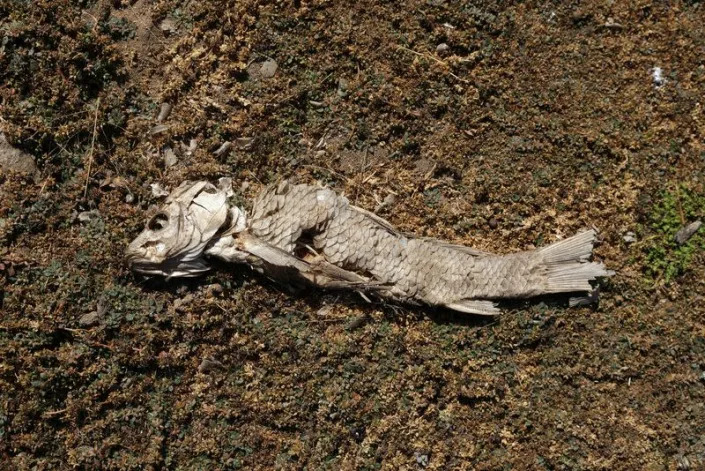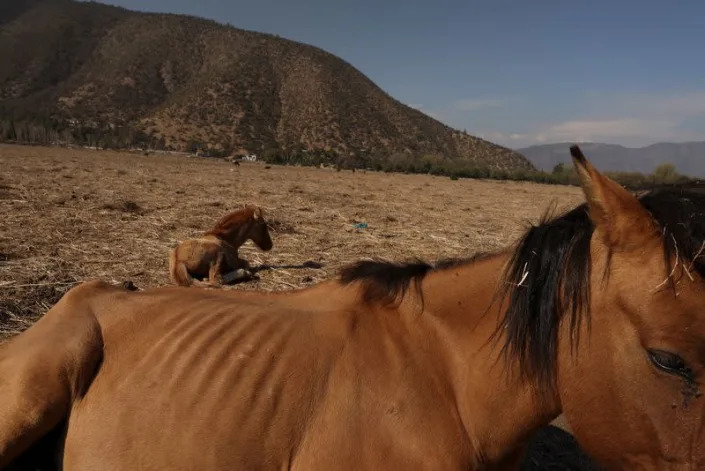We Let Monkeypox Spread for Too Long. If It Infects Our Pets, There’s No Getting Rid of It
David Axe
Sun, June 12, 2022

Monkeypox Virus monkeypox-airborne.jpg -
There was an undetected monkeypox outbreak already underway in the United States before health officials in Europe and the U.S. sounded the alarm about the dangerous viral disease back in May. That’s a problem. For every day that a virus spreads unmonitored and unchecked, there’s greater risk of it finding a permanent home in a country it was only visiting. In the case of the pox — in our pets.
Earlier this month, the U.S. Centers for Disease Control and Prevention announced that there are two strains of the virus circulating in the country, which indicates it’s probably been here much longer than originally thought. It’s not clear when that other outbreak began, but it could have potentially been months ago.
Monkeypox, which causes a rash and fever and is fatal in a very small percentage of cases, isn’t nearly as transmissible as Covid-19. But unlike the novel coronavirus, it spreads easily to and from certain animal populations — rodents in particular.
If the pox currently circulating in the U.S. spreads to rats, hamsters, or gerbils, and becomes endemic in those species, there might be no easy way to contain it. “I do share the other scientists’ concern of containment and the virus becoming endemic in our U.S. rodent population,” sys Stephanie James, the head of a viral testing lab at Regis University in Colorado.
There is some good news. For starters, no one has died yet as a result of either recent pox outbreak. And authorities are better equipped than ever to contain the outbreaks, thanks to large stockpiles of smallpox vaccine (which works against monkeypox, too) and their years of experience with contact-tracing thanks to Covid-19.
More good news: despite some mixed messages from some health experts, the pox is not airborne in its current form. The CDC didn’t respond to a request for comment, but the European Center for Disease Prevention and Control —Europe’s version of the CDC — stressed “there is no evidence of long-range airborne transmission.”
The confusion stems from the scientific definition of “airborne.” Covid matches the definition. Monkeypox does not. The pox can ride a very short distance on spittle, but it doesn’t waft and linger in fine “aerosol” mists from breathing and talking the way airborne Covid does.
The novel coronavirus can travel across a room on aerosols or even hover in the air for hours at a time. The monkeypox in our spit, by contrast, quickly falls to the floor just a couple feet from our mouths. “Respiratory droplets may be able to spread the virus, but it is not what is fueling transmission,” says Amesh Adalja, a public-health expert at the Johns Hopkins Center for Health Security. Instead, the pox spreads through very close contact.
The bad news is we’re playing catch-up. And as that initially undetected earlier outbreak indicates, we’re not even sure how far behind we are. It’s not enough to contain and treat the pox in people. We also need to prevent it spreading to rats and hamsters and other animals.
Monkeypox, which first made the leap from monkeys or rodents to people in the Democratic Republic of Congo in 1970, regularly flares up in Africa. But it rarely infects more than a couple thousand people a year — and killed just 33 people during its most prolonged outbreak in the DRC between 1981 and 1986.
When monkeypox spreads in places it’s not already endemic outside Africa, health officials perk up. In 2003, 47 people in the U.S. got sick with the pox after exposure to a shipment of pet rodents from Ghana to Texas. A rapid response by state and federal health officials — and a few doses of smallpox vaccine — prevented anyone dying and temporarily eliminated the virus in the U.S.
The larger of the current outbreaks began in early May, apparently triggered by a U.K. traveler’s exposure to an infected person or animal in Nigeria. Hitching a ride to Europe, the virus spread quickly through close physical contact. David Heymann, who formerly headed the World Health Organization’s emergencies department, said that men attending raves in Spain and Belgium “amplified” the outbreak — apparently through kissing and rubbing skin.
After that, the virus accompanied travelers on planes heading for countries far and wide. By June 2, the WHO had tallied 780 pox cases in 27 countries. The case count since has swelled to around 1,400. Health officials diagnosed the first U.S case on May 27.
As of Friday, 49 Americans in 16 states plus Washington, D.C. had the pox. The CDC suspects some of those cases are the result of an earlier outbreak that officials didn’t even notice until the later outbreak caused them to go back and take a closer look at some patients’ symptoms.
Pox rashes look a lot like symptoms of other diseases, including sexually-transmitted infections, or STIs. That earlier pox outbreak apparently slipped past medical professionals because they didn’t necessarily know what they were looking at. “These monkeypox cases outside of the endemic area have likely been smoldering along for some time, misdiagnosed as traditional STIs,” says Adalja, the public health expert.
That delay in confirming pox cases is worrying experts. Every day that passes in the current outbreaks increases the chance of transmission to pets and pests. If the pox becomes endemic in animal populations, we might never get rid of it. And countries such as the U.S. that once experienced just a few small pox outbreaks every 20 years or so could suffer bigger and more frequent outbreaks, just like countries in Africa already do.
That’s the worst-case scenario, but authorities can’t contain an outbreak they don’t even know is happening. It’s a troubling sign that, in the third year of a devastating pandemic, doctors, health officials and epidemiologists overlooked that earlier pox outbreak, giving the virus a head start in the race toward endemicity in animals. “I think we are dramatically under-testing, under-ascertaining cases and underestimating risk,” says James Lawler, an infectious disease expert at the University of Nebraska Medical Center. “We apparently didn’t learn very much from Covid.”
































